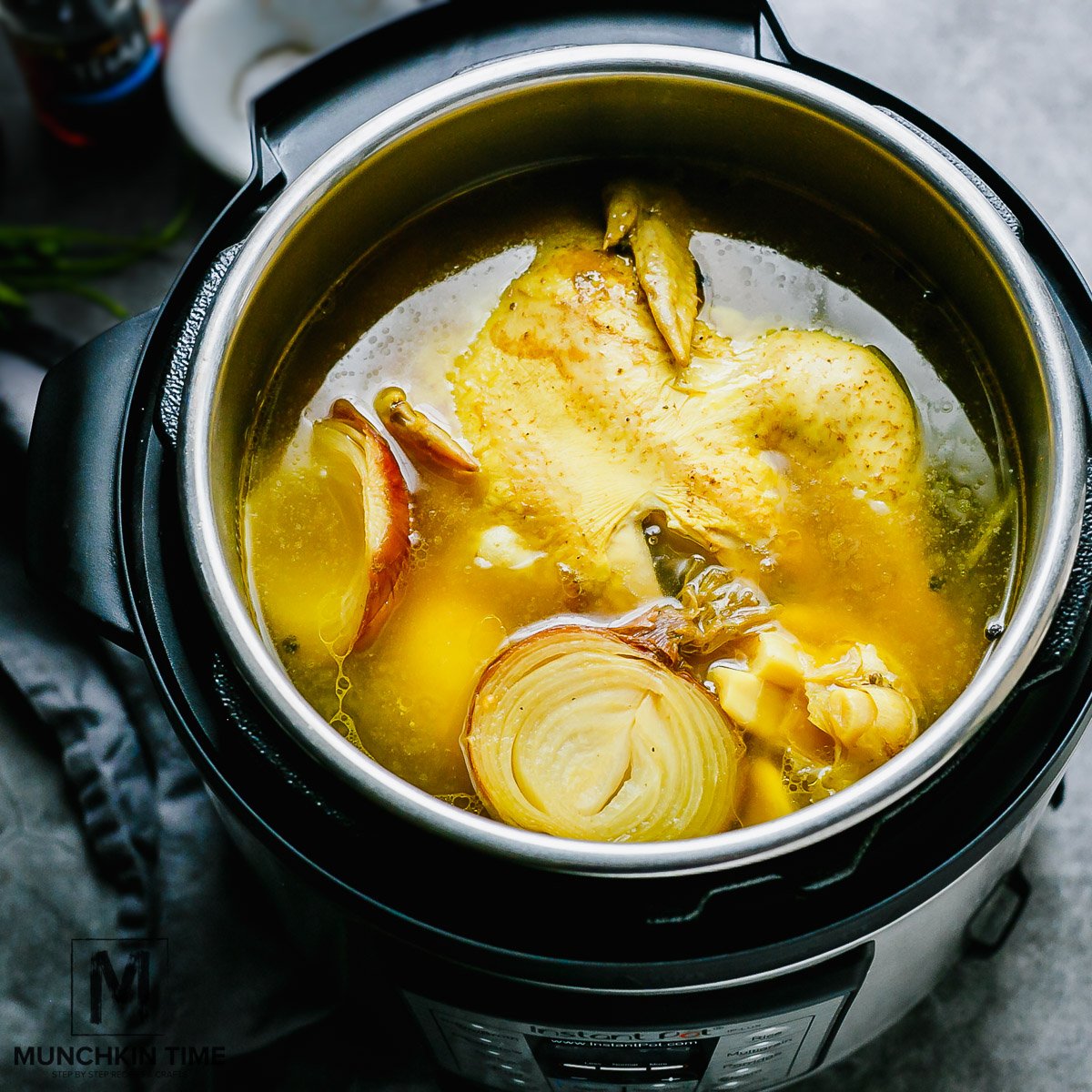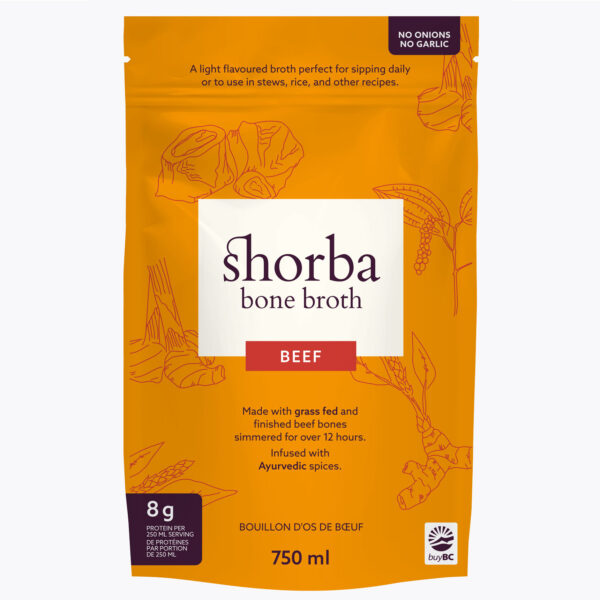Top 5 Benefits Of Bone Broth According to Health Coaches
Wiki Article
The Ultimate Overview to Enjoying and making Organic Bone Broths in your home
Bone broth has actually gained interest for its many health and wellness advantages and culinary adaptability. Crafting organic bone broth in your home enables people to control the high quality of active ingredients, making certain a nutritious end result. Understanding the option of bones, important flavoring parts, and correct food preparation strategies is vital. As the procedure unravels, one might question how to raise their broth beyond the essentials and include it right into daily dishes for improved flavor and nutrition.Understanding the Health Conveniences of Bone Broth
Bone broth has actually been a staple in different cuisines for centuries, its health and wellness advantages have acquired substantial interest in recent years. Rich in collagen, amino acids, and minerals, bone broth is often proclaimed for its possible to sustain joint wellness, improve gut function, and improve skin flexibility. The gelatin obtained from cooked bones may aid digestion and assistance secure the digestive tract lining, potentially easing problems like leaking digestive tract syndrome.Furthermore, the visibility of nutrients such as glucosamine and chondroitin might add to minimized inflammation and pain alleviation in joints. Furthermore, bone broth is moistening and can act as a nutritious base for stews and soups. Several advocates also claim that it enhances the immune system, many thanks to its mineral account. Generally, the rebirth of interest in bone broth is linked to its viewed capacity to promote general well-being and support different bodily features.Selecting the Right Bones for Optimum Taste and Nourishment
What aspects should one take into consideration when choosing bones for broth preparation? The sort of bones utilized considerably impacts both flavor and dietary value. Initially, it is crucial to pick bones that include a mix of marrow bones, joint bones, and meaty bones. Marrow bones offer healthy and balanced fats and abundant tastes, while joint bones contribute collagen, boosting the broth's nutritional profile.Additionally, sourcing bones from grass-fed or pasture-raised animals assurances higher top quality and more nutrients, as these pets are generally healthier. The quality of the bones is likewise important; picking bones from regional butchers or farmers' markets can ensure ideal flavor. Bone size matters too; larger bones release more jelly, causing a richer broth. Lastly, considering the kind of pet-- hen, beef, or fish-- can influence the last taste, permitting flexible brew alternatives tailored to individual choices.Vital Ingredients for a Flavorful Bone Brew

Quality Bone Option
The foundation of a delicious bone broth depends on the cautious choice of top notch bones. Sourcing natural, pasture-raised or grass-fed bones is necessary, as these options are most likely to be devoid of harmful ingredients and provide premium nutrients. Selections such as lamb, beef, or chicken bones each present distinct flavors and health advantages. Bone kinds, consisting of marrow bones, knuckle bones, and oxtails, contribute gelatin and collagen, improving the broth's structure. Selecting bones with a mix of meat and connective cells can also include splendor and deepness. Furthermore, selecting bones with visible marrow ensures a nutrient-dense broth, raising the general top quality. Inevitably, spending time in top quality bone option lays the foundation for a beneficial and scrumptious broth.Aromatic Taste Boosters
Choosing high-grade bones establishes the phase for a rich and nutritious bone broth, but it is the enhancement of fragrant flavor boosters that genuinely boosts the dish. Ingredients such as onions, garlic, and carrots not only impart sweetness yet additionally add deepness to the broth. Fresh natural herbs like parsley, bay, and thyme leaves add a fragrant note, while spices such as black peppercorns and cloves introduce heat and complexity. Furthermore, including a dash of apple cider vinegar can help essence minerals from the bones, enriching the brew. These taste enhancers develop a harmonious mix, changing an easy brew right into a mouthwatering foundation for stews, soups, or sauces, making it a flexible part in any kind of cooking repertoire.Step-by-Step Overview to Making Bone Brew in the house
Producing bone broth in the house can be a rewarding culinary venture that boosts both flavor and nutrition in numerous dishes. To begin, one need to pick premium bones, preferably from grass-fed or organic sources. Roasting the bones at 400 ° F for about half an hour can magnify the flavor. Next, transfer the baked bones to a large pot or slow-moving stove and cover them with chilly water. Including a splash of vinegar assists essence minerals from the bones.Include aromatic veggies like onions, carrots, and celery for included depth, together with natural herbs and flavors as preferred. Bring the blend to a boil, then reduce to a simmer. It is necessary to allow the broth simmer for a minimum of 12 hours, however much longer is better for optimum splendor. Finally, pressure the broth through a fine-mesh screen and store it in impermeable containers, try this out all set to boost dishes with its healthy essence.
Tips for Developing Your Bone Broth Simmer
While simmering bone broth, keeping the best temperature and timing is necessary for attaining a flavorful and abundant result. A mild simmer, preferably in between 190 ° F and 210 ° F, assists essence maximum nutrients and flavors without boiling, which can make the broth cloudy. It is suggested to monitor the pot very closely, readjusting the warm as essential to keep this simmer.Timing is also vital; a longer simmer, normally ranging from 12 to 48 hours, enables for much deeper taste extraction and collagen launch. For chicken bones, a 12 to 24-hour simmer suffices, while beef bones gain from longer food preparation times.Additionally, skimming off any type of foam or contaminations that increase to the surface area throughout the first couple of hours can boost the broth's clarity and taste. Finally, making certain the pot is covered throughout simmering assists to retain dampness and escalate the tastes, making for an extra enjoyable final product.Creative Ways to Make Use Of Bone Broth in Your Food preparation
Including bone brew right into different meals raises both taste and dietary worth. Cooks and home cooks alike find that using bone brew as a base for stews and soups enhances depth and richness, transforming simple dishes into passionate meals. It can additionally be employed in risottos, where the brew replaces water, allowing the grains to absorb its savory essence.Additionally, bone brew functions as an excellent food preparation fluid for grains like quinoa or rice, infusing them with nutrients and taste. For an included twist, it can be made use of in braising meats, resulting in tender, tasty outcomes. Also sauces take advantage of a dash of bone broth, enhancing their preference profile.Moreover, bone brew can be incorporated into smoothies for an unexpected wellness boost, supplying protein and nutrients without endangering taste. These imaginative applications display the convenience of bone broth in everyday food preparation, making it a very useful kitchen area staple.Storing and Maintaining Your Self-made Bone Brew
Appropriate storage space and conservation of homemade bone brew is crucial for preserving its taste and nutritional benefits. Cold strategies and refrigeration ideal techniques play an essential duty in extending the brew's rack life. Comprehending these approaches can aid guarantee that the broth remains safe and delicious for future usage.

Freezing Techniques Discussed
Cold methods are necessary for successfully saving and protecting self-made bone broth, ensuring its abundant flavors and nutrients continue to be undamaged for future use. To ice up bone broth, it is a good idea to let it cool totally before moving it to storage containers. Glass jars, silicone mold and mildews, or heavy-duty fridge freezer bags are suitable options. When using containers, leave room at the top for development during cold. Portioning the brew right into smaller sized quantities permits very easy thawing and reduces waste. Label containers with the date and contents for very easy see this identification. For peak top quality, take in the frozen broth within 3 to 6 months - Chicken Broth. Thawing can be performed in the fridge or by utilizing a microwave, ensuring that the broth is heated thoroughly prior to intakeRefrigeration Best Practices
While numerous concentrate on freezing as a method of preservation, refrigeration also plays a necessary duty in storing homemade bone broth effectively. Once cooled, bone brew should be transferred to closed containers, guaranteeing minimal air direct exposure to prevent spoilage. It is recommended to cool broth within two hours of cooking to maintain its quality. Usually, homemade bone brew can be saved in the fridge for up to 5 days. Classifying containers with dates can help track freshness. For peak taste and security, broth ought to be reheated to a moving boil prior to usage. If longer storage is called for, cold remains an exceptional option, yet proper refrigeration practices assure that bone brew stays nourishing and delicious for short-term use.Often Asked Inquiries
Can I Use Frozen Bones for Making Bone Brew?
The question of utilizing icy bones for bone brew arises often (Organic Bone Broths). Experts concur that icy bones can be used efficiently, yet they must be defrosted before cooking to assure perfect taste and nutrient removalHow Much Time Can I Shop Homemade Bone Broth?

Is It Safe to Reheat Bone Broth Several Times?
Reheating bone brew several times can pose safety and security concerns - Chicken Broth. Each reheating cycle boosts the threat of microbial development. It is advisable to reheat just once and save any kind of leftovers immediately to guarantee safety and security and qualityCan I Add Veggies to the Brew for Flavor?
Adding veggies to broth enhances taste and dietary worth. Usual options include carrots, onions, and celery. The veggies infuse their essence right into the broth, creating a richer and more tasty last item.What's the most effective Method to Defrost Icy Bone Brew?
To defrost icy go to these guys bone brew, one can put it in the refrigerator overnight, make use of a microwave on reduced heat, or immerse the sealed container in warm water, making sure also defrosting without compromising taste or nutrients. It is vital to pick bones that include a mix of marrow bones, joint bones, and meaningful bones. Marrow bones provide healthy fats and abundant flavors, while joint bones contribute collagen, boosting the brew's dietary profile.Additionally, sourcing bones from grass-fed or pasture-raised pets guarantees greater quality and more nutrients, as these animals are normally healthier. Bone kinds, including marrow bones, knuckle bones, and oxtails, contribute gelatin and collagen, enhancing the brew's appearance. Picking top notch bones establishes the phase for a healthy and rich bone broth, yet it is the addition of aromatic taste enhancers that really elevates the meal. Even sauces profit from a dash of bone brew, improving their taste profile.Moreover, bone broth can be integrated right into smoothie mixes for an unanticipated health boost, providing healthy protein and nutrients without endangering taste.Report this wiki page